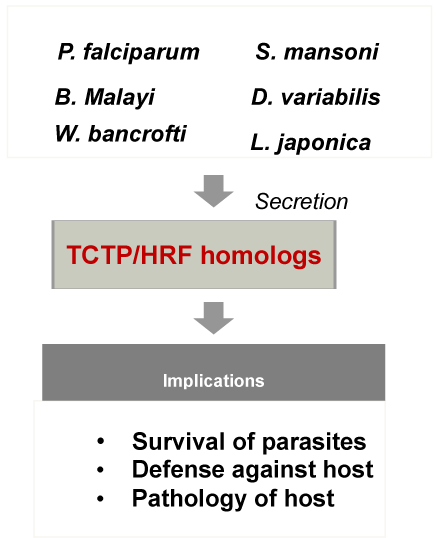
 |
| Figure 1: A Schematic diagram depicting the scope of this review. TCTP homologues are actively secreted during various parasitic infections (malaria, filariasis, ixodid tick, lamprey, and Schistosoma among others) and they are readily detected in the biological fluids of infected hosts. Parasitic homologues of TCTP are involved in histamine release, eosinophilic infiltration, and B cell regulation, all, possibly involved in the manifestations of pathologic symptoms in the host and in the modulation of host-immune functions. In addition, anti-oxidant- and heat shock protein (HSP)-like functions of parasitic TCTPs also seem to contribute to the survival of parasites against host surveillance responses during the parasitic infection. Overall, parasitic TCTPs play a pivotal roles in evading the host immune responses and in the pathogenesis of parasitic diseases in host organisms [25-30]. |